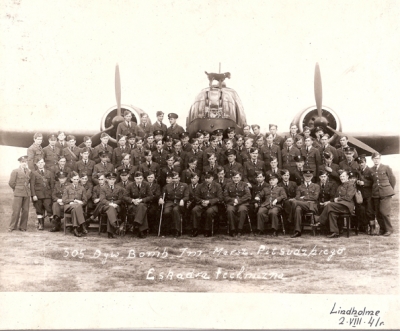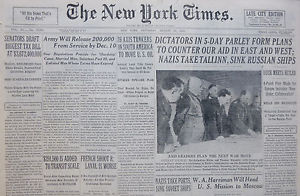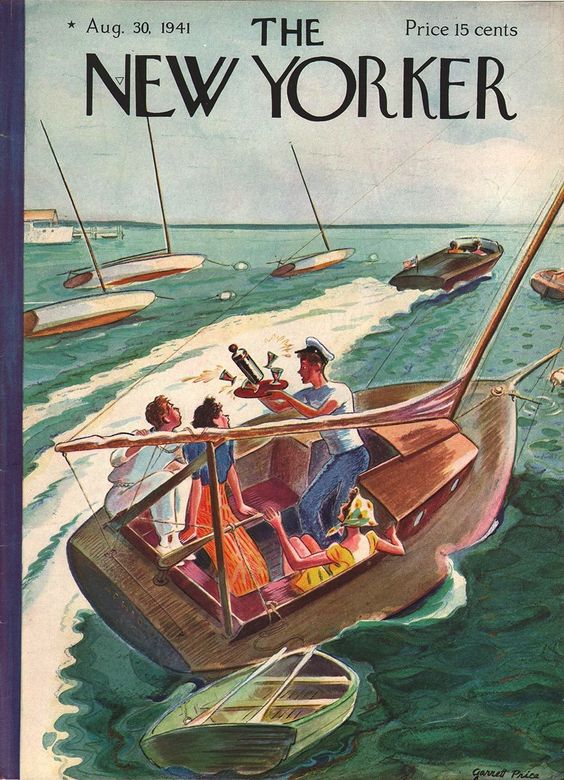Saturday 2 August 1941
 |
| Two Finnish soldiers manning a Maxim machine gun, August 2, 1941 (SA-Kuva). |
Eastern Front: Japanese Ambassador to Germany Oshima cables Tokyo on
2 August 1941 with news about the Eastern Front. He reports that an unnamed Swedish reporter who claims to have visited the front in the Baranovichi area has related that, while Germany must inevitably triumph over the Soviet Union, not everything is going well for the Wehrmacht. The Red Air Force remains powerful, and the Red Army has substantial reserves that it is throwing into the front around Leningrad. The reporter also relates to Oshima that German officers he has talked with already have noticed US tanks and planes being used in the Volga and Siberia areas.
Oshima's report also notes that:
Germany's greatest ordeals have been the result of guerrilla tactics used by the Soviet soldiers and civilian inhabitants. There is a thickly wooded area in the Pripet swamps. There are many, many remaining troops taking refuge in it. A German force endeavored to rout them, but knowing nothing of the area, failed completely.
The report seems grounded in solid fact (though the presence of US equipment at this time is questionable). The German offensive has prospered by sticking to the roads and quickly heading east to capture cities and Soviet military bases. This strategy, however, has the inherent drawback of leaving many Soviet troops and even entire units in the rear areas, fully capable of resisting and even taking offensive action against nearby Wehrmacht units and bases. Perhaps most tellingly, the German officers are surprised and even worried because captured Soviet troops remain loyal to the Stalin regime and appear committed to continuing their guerrilla warfare even if Moscow falls.
 |
| A Finnish patrol leader’s kit, including a KP-31 submachine gun, grenades, and a Luger pistol, August 2, 1941 (SA-Kuva). |
In the Army Group North sector, German 16th Army (Colonel General Ernst Busch) continues attacking Staray Russa below Lake Ilmen.
In the Army Group Center sector, General Guderian's Panzer Group 2 attacks toward Roslavl as it heads south on Hitler's express orders to help with the conquest of Kiev. The Soviet, meanwhile, ramp up their attacks on the advanced German "lightning rod" position at Yelnya.
In the Army Group South sector, after many days of very hard fighting, Panzer Group 1 (General Ewald von Kleist) completes the encirclement at Uman. This happens when German XLVIII Corps (General Kempf) hooks up with German 17th Field Army (General Carl-Heinrich von Stülpnagel). The closure southwest of Uman is all the more dangerous to the trapped Soviet forces because 16th Panzer Division and Hungarian Mechanized Corps (Gyorshadtest) also are close to forming a second, separate closure at Pervomaisk. The Soviets have parts of 20 divisions of their 6th, 12th, and 18th armies inside the pocket, including four corps commanders and 11 division commanders. Resistance does continue until about 8 August. However, except for small parties, the Soviets trapped today are unable to break out, and 103,000 Soviet soldiers go into captivity.
 |
| Young Finnish soldiers marching to the front. Laamala, August 2, 1941. |
European Air Operations: RAF Bomber Command sends 24 Blenheim bombers on Rhubarb coastal sweeps during the day between Cherbourg and Texel. The British lose one plane. Another attack is made on Kiel with three Fortresses. Kiel takes light damage, with one person killed and 9 injured, and all the Fortresses make it back to base.
During the night, RAF Bomber Command goes back into action in a big way after about a week of unsettled weather and light operations. There are multiple raids, as the British believe in diversionary raids to distract the Luftwaffe night fighters. It is one of the RAF's biggest efforts of the war to date but produces only modest returns.
The main British attack is on Hamburg with 80 bombers (58 Wellingtons, 21 Whitleys, 1 Stirling). They lose two Wellingtons. Hamburg takes moderate damage, with 5 dead, 38 wounded and 738 made homeless. Five large fires and five other small fires break out, some of which burn throughout the night.
A secondary attack on Berlin is made by 53 aircraft (40 Wellingtons, 8 Halifaxes, and 5 Stirlings). The sky still is a bit opaque and bombing accuracy is poor. The British lose 3 Wellingtons and one Stirling.
Another attack is made on Kiel by 50 Hampdens. The British lose five planes. The damage to Kiel is light, with one injury and one house hit, though the RAF pilots claim that the raid is a great success on the dockyards area.
The RAF also sends 20 Wellingtons to Cherbourg, but little is accomplished there because of low-lying clouds. In addition, five Hampdens are sent to lay mines off of Kiel. There are no losses from these operations.
Overall, for 208 sorties, the RAF loses 11 aircraft during the night. This works out to a 5.3% loss rate, which is at the upper margins of sustainable losses.
RAF No. 129 Squadron (Mysore), equipped with Supermarine Spitfires at RAF Leconfield, becomes operational and its pilots quickly shoot down a Junkers Ju-88 near Flamborough Head. No. 129 Squadron is named after an Indian province in recognition of the Indian government raising substantial sums of money for the war effort. However, it is not manned by Indian pilots.
 |
| A Finnish soldier looks down the sights of a 20mm Lahti L-39 anti-tank rifle, 2 August 1941 (SA-Kuva). At this time, a 20-mm anti-tank weapon is still capable of destroying most armor except for Soviet KV tanks. A well-placed round could blow off a tread or penetrate the rear or the sides of most tanks. |
Battle of the Baltic: Soviet submarine S-11 hits a mine and sinks in the Soela Väin Strait, Estonia (between Saaremaa and Hiiumaa). There are 44 deaths and three survivors. The submarine is raised after the war and scrapped. Soviet submarine M-99 also sinks around this time due to mines.
German 2nd S-Boat Flotilla lays 36 TMB mines off Cape Rista in the Gulf of Finland.
The Luftwaffe (KG4) drops 22 aerial mines north of Moon Sound, 15 east of Moon Sound, and 18 LMB mines west of Worms Island.
Finnish submarine Veshiisi (Lt. Cdr. Kijanen) lays eighteen mines in Minefield F.17 east of Odensholm.
 |
| Experts of the British Ministry of aircraft production examine a Bf 109F forced down near Kent, England, August 2, 1941. (AP Photo). |
Battle of the Atlantic: The Royal Navy finally concedes that Operation EF, the Force K attack on Kirkenes and Petsamo, has turned into a liability when it spots German reconnaissance shadowing the fleet. The Admiralty calls off a planned attack on Hammerfest, Norway due to inability to maintain surprise and heads for home.
The RAF bombs and sinks Dutch pilot boat Loodsboot No. 12 west of Den Helder.
German guard ship H 855 Stoomloodsvaartuig 12 sinks, perhaps due to an RAF attack.
The Luftwaffe bombs and damages 1110-ton British freighter Koolga about 20 km off Great Yarmouth. It makes it to Great Yarmouth under tow on the 3rd.
Two Dutch tankers, 8252-ton Murena and 2068-ton Rozenburg, collide at Halifax, Nova Scotia. The bigger ship usually wins in such situations, and that is the case this time, as Rozenburg goes to the bottom.
Some sources pin the Luftwaffe bombing of British freighter Trident to today, while others list it on 1 August.
U-204 (Kptlt Walter Kell) spots Convoy SL-81 in the North Atlantic and informs U-boat headquarters in Paris.
US Navy battleship USS New Mexico (BB-40) returns to New London, Connecticut from a neutrality patrol.
Royal Navy minesweeper HMS Tadoussac is launched, submarine HMS P-48 and minesweeper Wedgeport are laid down.
Canadian minesweeper HMCS Minas (Lt. Commander Lt. James B. Lamb) is commissioned.
US Navy light cruiser USS Miami is laid down in Philadelphia.
U-154 (Korvettenkapitän Walther Kölle) is commissioned.
 |
| Liberty magazine, 2 August 1941. |
Battle of the Mediterranean: There is a brief stir on the usually static Tobruk perimeter when two Australian companies attack Italian positions, supported by a heavy artillery barrage of over 60 guns. The Australians are attempting to recover some tactically useful territory lost during the May fighting but fails with heavy casualties. The Italian 7th Bersaglieri Regiment holds its ground against the Australian 2/43rd and 2/28th Battalions.
Operation Style, a convoy mission to Malta, continues. Royal Navy aircraft carrier HMS Ark Royal launches a load of Hurricanes to Malta. Light cruisers Arethusa and Hermione continue on to Malta with fast minelayer Manxman and destroyers Lightning and Sikh, unloading collectively 54 officers and 970 other ranks, along with 130 tons of supplies. All of the ships unload quickly and the entire force, including Ark Royal, returns to Gibraltar.
During the afternoon, Royal Navy light cruiser HMS Hermione, sailing with the Operation Style ships, spots a submarine shadowing the convoy. It rams and sinks Italian submarine Tembien off Tunis.
The Luftwaffe attacks Australian destroyer Vendetta and Royal Navy destroyer Havock off Tobruk during the night supply run. However, South African fighters drive the Germans off. Both sides lose about three planes.
Battle of the Black Sea: Soviet submarine L-5 (Lt Cdr Zhdanov) lays 14 mines off Mangalia, Romania.
Battle of the Pacific: Dutch patrol boat Bellatrix seizes Vichy French vessel Dupleix and gives it to the Netherlands East Indies naval forces for use.
 |
| To make a point about the consequences of unlawful communications with England, the Germans post this notice (in English, right) in the Channel Islands about a Frenchman being executed on 2 August 1941. In fact, someone on the Channel Islands will at one point also be shot for supposedly using carrier pigeons to communicate with England. |
Spy Stuff: The Japanese continue to keep a close eye on US activities across the Pacific. Interest is keen on US intentions given the recent imposition of sanctions on Japan. The Japanese embassy in Manila reassures Tokyo that the number of planes flying over Manila has decreased considerably, and the US planes flying over the Philippines have not been camouflaged or otherwise altered in a war-like fashion. This information helps to defuse tensions in Tokyo.
The Japanese also are spying on US fleet movements in the Atlantic. Tokyo receives a report today from its spies in Cuba stating the composition of US naval forces in Guantanamo Bay from 16-24 July 1941: two battleships, four light cruisers, four destroyers, two Coast Guard cutters, and two bombers.
US/Japanese Relations: The economic sanctions imposed by President Roosevelt on Japan recently have caught some ships at sea without instructions as to how to proceed. Tatsuta Maru sits off San Francisco Bay with a load of $2.5 million of raw silk, but the captain refuses to make port without assurances that the US government will not seize his cargo. A Japanese liner, 16,975-ton Asama Maru, is sailing about 980 miles north of Honolulu but also is unsure how to proceed.
The Japanese Foreign Ministry scrambles to come up with a solution. Finally, it instructs Tatsuta Maru to stop at Honolulu. It also orders freighter Heian Maru at Seattle to proceed to Vancouver and unload there.
Japanese Ambassador Nomura has a conversation with an unidentified US Cabinet member. As Nomura informs Tokyo after the meeting:
The United States is trying to restrain Japan, first of all, by waging an economic war... [T]he United States is at the same time making military preparations against the possible eventuality of a clash of arms... That the Russo-German war is lasting longer than expected has proved to be an advantage to the United States... The cabinet member believes firmly in the necessity of this war lasting for several years for the reason that due to destruction of her men and materials, and due to the shortage o foil, Germany would not be able to do anything on a great scale even after the fighting on the Eastern Front has come to an end.
This, of course, proves prophetic, but not exactly in the manner intended.
 |
| Lieutenant Colonel Bohdan Kleczynski (holding cane) with his ground crew of RAF No. 305 Polish bomber squadron in front of a Wellington (Lindholme, August 2, 1941). Kleczynski Papers, Box 2, Hoover Institution Archives. |
US/Dutch Relations: US Army Air Force General Henry Clagett arrives in Java to coordinate future air operations with the local Dutch authorities and to survey airfields and base sites.
US/Soviet Relations: President Roosevelt's personal emissary to the Soviet Union, Harry Hopkins, announces that he has arranged with Joseph Stalin for the commencement of US lend-lease shipments to the Soviet Union.
Chinese/Soviet Relations: The local Soviet army in Outer Mongolia orders the Chinese Communist forces under Liu Po-Chao to transfer to Suihoku, which the Chinese do. This is the beginning of cooperation between Soviet and Chinese forces. The Soviets also promise to provide supplies to the Chinese via Outer Mongolia, which the Chinese help to transport.
Japanese/Thai Relations: The Japanese reach an agreement with the Thai government in which the Thaiese authorities will extend a letter of credit worth 10 million bahta to finance Japanese purchases of Thai goods. This enables trade to continue between the two nations despite the recent economic sanctions imposed by the United States and Great Britain.
 |
| Oliver Wendell Harrington, The Amsterdam News, 2 August 1941. "That jive he's playin' on his tooter may not be in the army manual, Major, but that's the only way we can get them cats up in the mornin'." This cartoon plays upon the idea in the Andrew Sisters' "Boogie Woogie Bugle Boy," recorded on 2 January 1941 and included in the Abbott and Costello film "Buck Privates, released in January 1941. |
Japanese/Dutch Relations: Due to heightened tensions and the Dutch impositions of sanctions, Japanese nationals in the Dutch East Indies are fleeing the territory, swarming shipping agencies for passage back to Japan. The Netherlands Indies do relent just a bit on the sanctions recently imposed on Japan in conjunction with the United States and Great Britain. The Dutch allow one shipment of rubber, tin, and Ilmenite. The Japanese, meanwhile, are putting pressure on the Dutch by restricting food shipments from French Indo-China.
Japanese/Croatian Relations: Croatia, an Italian puppet state, officially recognizes the Japanese puppet state of Manchukuo.
Anglo/Japanese Relations: The subject of British aid to China is a sore spot for the Japanese. Tokyo receives a report from Shanghai today revealing that the British are cooperating closely with Chinese military authorities.
Anglo/Finnish Relations: Having broken relations with Finland on the 1st, the Royal Navy extends its blockade of Europe to include the northern Finnish ports. For the moment, this is somewhat symbolic, as the British have nowhere nearby to supply their ships that far north.
Anglo/Iran/Afghani Relations: The British demand that Iran and Afghanistan expel all German nationals immediately. Having retained Iraq, the British feel they are in a strong position in the Middle East. Some Germans caught in Iraq have escaped to Iran and Afghanistan, but, still, there are very few there.
 |
| Errol Flynn on his yacht "Scirocco," 2 August 1941. There later are unproven allegations that Flynn was a German sympathizer at this time. |
German/Italian Relations: The Italian Pasubio Infantry Division and Torino Infantry Division move to the Eastern Front in the Army Group South region. However, they do not see combat at this time.
Japanese Military: The Nakajima Ki-43-I Hayabusa ("Peregrine Falcon," or "Oscar" in US military nomenclature) begins arriving at the Japanese 59th Flight Regiment (FR) at Hankow Airfield. The pilots begin training with the new plane, which will see operational use beginning on 29 October 1941.
Soviet Military: The NKVD is given orders to shoot on sight anyone suspected of injuring themselves to avoid combat. This is a pet suspicion of Joseph Stalin, who also suspects cowardly troops of sabotaging their own equipment. Deserters, meaning anyone walking away from the battlefield, already are subject to summary execution.
British Military: The British open a mosque in London for Muslim soldiers serving in the British armed forces.
US Military: The U.S. War Department dedicated the Millville Army Air Field (MAAF) as “America’s First Defense Airport.” The Millville, New Jersey airport serves as a gunnery school for fighter pilots, with training first conducted in the Curtiss P-40F Warhawk, then for most of the war in the Republic P-47 Thunderbolt.
US Government: With trade severed between the United States and Japan, rayon (some forms are called "artificial silk") imported from Japan suddenly is in short supply. The US government thus decides to ration rayon.
 |
| Hildesheim Marketplace, showing the Town Hall, 2 August 1941 (Proietti, Ugo, Federal Archive, Bild 212-274). |
German Government: In the early morning hours, after the midnight conference, Hitler sits around with his cronies expostulating on random topics as he often likes to do. Today, his topic is bureaucracy:
It's certain that we have a clean, incorruptible administration, but it's also too punctilious. It's over-organized, and, at least in certain sectors, it's overloaded. Its principal fault is that nobody in it is seeking for success and that it includes too many people without responsibility. Our functionaries fear initiative worse than anything else — and what a way they have of behaving as if they were nailed to their office chairs! We have much more elasticity in the army, with the exception of one sector of the Wehrmacht than in these civilian sectors. And that although the salaries are often inadequate!
Some neutral observers would likely agree that the World War II German bureaucracy is over-organized. However, that also, in the view of some, is one source of the efficiency of Wehrmacht divisions, which are very good at logistics and planning.
 |
| Rexist leader Léon Degrelle (center) during his medical examination on August 2, 1941, before his departure to the Eastern Front. Degrelle is one of Hitler's favorites - reportedly (accordingly to Degrelle after the war, at least), Hitler likes to say that if he had a son, he wishes it would be someone like Degrelle. The notation on the back of the photo reads: "Medical examination of the Walloon volunteers for the anti-Bolshevist front." |
Holocaust: Germans massacre a large number of Jews at Ponary, Lithuania, allegedly numbering in the thousands.
Germans kill approximately 200 Jews at Kovno, Lithuania. This massacre apparently includes an American Jewish woman.
Norwegian Homefront: The German occupation authorities confiscate all civilian radios that they can find. However, as in other occupied nations, many remain used with great secrecy to listen to the BBC, which is considered a much more accurate source of news than German or Norwegian radio broadcasts.
American Homefront: The first Packard-built Rolls-Royce Merlin engine, designated V-1650-1, rolls off the assembly line. It is a version of the Mark XX generating 1,390 hp (1,040 kW). It is intended for the Curtiss P-40F and XP-60 fighters. Packard Motor Car Company is producing the Merlin under license from Rolls Royce that was granted in September 1940. Rolls Royce made an order for $130 million worth of the engines. Packard will produce a total of 55,523 Rolls-Royce Merlin engines under license during World War II. Some remain in use well into the 21st Century.
 |
| Picture Post, 2 August 1941. Is this the prettiest face in films? The magazine answers that question with a "yes." It is US actress Veronica Lake. |
August 1941
August 1, 1941: More Executions on CreteAugust 2, 1941: Uman Encirclement ClosesAugust 3, 1941: Bishop von Galen Denounces EuthanasiaAugust 4, 1941: Hitler at the FrontAugust 5, 1941: Soviets Surrender at Smolensk August 6, 1941: U-Boats in the ArcticAugust 7, 1941: Soviets Bomb BerlinAugust 8, 1941: Uman Pocket CapturedAugust 9, 1941: Atlantic Conference at Placentia BayAugust 10, 1941: Soviet Bombers Mauled Over BerlinAugust 11, 1941: Rita Hayworth in LifeAugust 12, 1941: Atlantic Charter AnnouncedAugust 13, 1941: The Soybean CarAugust 14, 1941: The Anders Army FormedAugust 15, 1941: Himmler at MinskAugust 16, 1941: Stalin's Order No. 270August 17, 1941: Germans in NovgorodAugust 18, 1941: Lili MarleenAugust 19, 1941: Convoy OG-71 DestructionAugust 20, 1941: Siege of Leningrad BeginsAugust 21, 1941: Stalin EnragedAugust 22, 1941: Germans Take CherkassyAugust 23, 1941: Go to KievAugust 24, 1941: Finns Surround ViipuriAugust 25, 1941: Iran InvadedAugust 26, 1941: The Bridge Over the DesnaAugust 27, 1941: Soviets Evacuate TallinnAugust 28, 1941: Evacuating Soviets SavagedAugust 29, 1941: Finns take ViipuriAugust 30, 1941: Operation AcidAugust 31, 1941: Mannerheim Says No2020





































